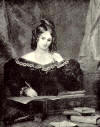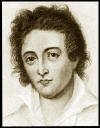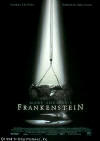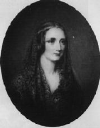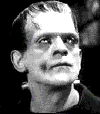
It Happened
in History!
(Go to
It Happened in History Archives)
|
Shelley's Frankenstein story deals with an ambitious young scientist who creates life from death before turning against his monster.
Shelley was born in London on Aug. 30, 1797, to writer Mary Wollstonecraft, who died of puerperal fever 10 days after the birth. Mary felt guilty for her mother's death and spent a good deal of time at her grave, trying to communicate with her spirit. Shelley's father, writer and political journalist William Godwin, became famous for his work, An Enquiry Concerning Political Justice (1793). He encouraged his daughter to be an intellectual, as her mother had been. Godwin, himself, maintained revolutionary attitudes toward most social institutions, including marriage. Among Godwin's other books, he wrote, Things as They Are, or The Adventures of Caleb Williams (1794). He encouraged his daughter to read anything she wanted from his library and to associate with his intellectual friends, who included the critic William Hazlitt, essayist Charles Lamb, poet Samuel Taylor Coleridge, and Percy Bysshe Shelley, who joined Godwin's circle in 1812. Mary Shelley often sat in on conversations that her father had with friends such as William Wordsworth. One night in 1806, she hid behind the parlor sofa to hear Coleridge recite his famous poem The Rime of the Ancient Mariner.
The couple married in 1816 after Shelley's first wife committed suicide by drowning. Their first child, a daughter, died in Venice a few years later. In History of Six Weeks Tour (1817), the Shelleys jointly recorded this period of their life. Shortly after, they returned to England, where Mary gave birth to a son, William.
The story had been influenced by a discussion about the scientific phenomenon of galvanism. Godwin had first learned of Luigi Calvani's experiments with electric shocks to make dead frogs' muscles twitch while attending Eton College. James Lind may have demonstrated the technique to Shelley while visiting Godwin. In her Introduction to the 1831 edition of her novel, Mary revealed that she got the story from a dream, in which she saw "the hideous phantasm of a man stretched out, and then, on the working of some powerful engine, show signs of life, and stir with a uneasy, half vital motion." The first edition of the book contained an unsigned preface by Percy Shelley. Many thought that it was his novel, refusing to believe that a 19-year-old woman could write such a horrifying story. When the book was published in 1818, it became an instant success.
Of their children, only one, Percy Florence, survived infancy. In 1823, Shelley returned with her son to England, determined not to remarry. She devoted herself to her child's welfare and education while continuing her career as a writer. True to her word, she never remarried, although she flirted with the young French writer Prosper Merimee for years. Although Shelley wrote later works that included Lodore (1835) and Faulkner (1837), both romantic pot-boilers, and the uncompleted Mathilde (1819, published 1959), which draws on her relations with Godwin and Shelley, her first book remained her most popular and her best. Other Shelley works include Valperga (1823), a romance set in the 14th-century, and The Last Man (1826), depicting the end of human civilization, set in the 21st century republican England. Shelley gave up writing long fiction when literary realism began gaining popularity, as in the works of Charles Dickens. She wrote numerous short stories for popular periodicals, including The Keepsaker. She also produced the first authoritative edition of her husband's poems (1839, 4 vols.) and wrote the well-received travelogue Rambles in Germany and Italy, which appeared in 1844. She attempted a biography on Shelley but eventually abandoned the work.
Mel Brook's parody, Young Frankenstein (1974), starring Gene Wilder in the role of the young Dr. Frankenstein, was beautifully photographed. Brooks used many archaic optical devices, including the old 1:85 aspect ratio for height and width of the frame. The film received an Academy Award nomination for its script. Among its highlights is the scene in which Peter Boyle as the monster visits bearded blind recluse Gene Hackman, barely managing to survive Hackman's hospitality. Kenneth's Branagh's film, Mary Shelley's Frankenstein (1994), was faithful to the book. The director, himself, played Dr. Frankenstein, while Robert De Niro played the monster under a heavy mask. Mary Shelley died in 1851.
Discover Mary Shelley
Indulge
Yourself - Check Out Today's Best-Selling |
- HOME -
